On day 8 of our self-drive, we departed for Kayabuki No Sato which took about an hour to arrive by car.

Kayabuki No Sato – Day 8
Kayabuki no Sato is a historic village located in the Miyama region of Kyoto Prefecture, Japan. It is known for its traditional thatched roof houses, which are made of kayabuki, a type of thatching grass.
The village is located in a rural area, surrounded by mountains and forests, and is considered to be one of the most picturesque villages in Japan. The thatched roof houses are preserved in their original form, and many of them date back to the Edo period (1603-1868). Some of the houses have been converted into guesthouses, where visitors can experience the traditional way of life in the village.

It is a popular destination for tourists who are interested in traditional Japanese culture and architecture, and it offers a unique glimpse into the rural way of life in Japan.
There are approximately 50 houses in this village, with 38 of them being thatched-roofed. Thatched-roofed houses easily catch fire. So you will notice the main building of every house is equipped with a ladder pipe nozzle which is stored in a box in the shape of a tiny hut house. At first, I wonder what are those.

Most of the houses in the village were built in the middle and late Edo period. I felt a little uncomfortable going to these homes and looking into their homes. These folks are just regular folks. I guess they are just used to it. The air was fresh in the village and the village was clean. You can spend 2-3 hours strolling in this small village, not many tourists during our visit in December.

Amanohashidate
Next, we drove to Amanohashidate which took us about an hour and a half to reach.
Amanohashidate is a scenic area located in northern Kyoto Prefecture, Japan. It is a sandbar that stretches 3.6 kilometers across Miyazu Bay, and is considered one of Japan’s three most scenic views, along with Miyajima and Matsushima. To ensure these three stunning places remain appreciated and well taken care of, the country’s Agency for Cultural Affairs has officially declared them all “Special Places of Scenic Beauty.”
The name “Amanohashidate” translates to “bridge to heaven,” and according to legend, it was formed by the gods to allow them to cross between heaven and earth. The sandbar is lined with approximately 8,000 pine trees, which create a beautiful natural corridor to walk through.


We had our lunch here before we started to explore Amanohashidate. We wanted something fast so we had a sashimi rice set, udon tempura, and a beef yakiniku set meal. The yakiniku takes a little more time to get grilled on the hot plates.

This area filled with shrines, foods, and other treasures, is a great day trip from Kyoto that’s perfect for folks looking to explore more of the prefecture. It is about 2 hours drive from Kyoto. You can spend a day here.
There are many ways to enjoy Amanohashidate, such as walking across the sandbank or relaxing on the beach. If you go up to the observatories by cable car, you’ll be able to see a view of the sandbank dividing the waters. We choose to go up by cable car.
There is a boat ride to the cable car up to the mountaintop observation deck. You can purchase the boat ride and cable car ticket together.

You will be surprised that dozens of seagulls follow the boat once the boat takes off. You should go up to the upper deck so you have a chance to get really close up with the seagulls. You see the seagulls trying to catch the Calbee prawn crackers as the passengers throw them up in the air. I have never been able to get so close in touch with so many seagulls in my life. What an interesting experience.
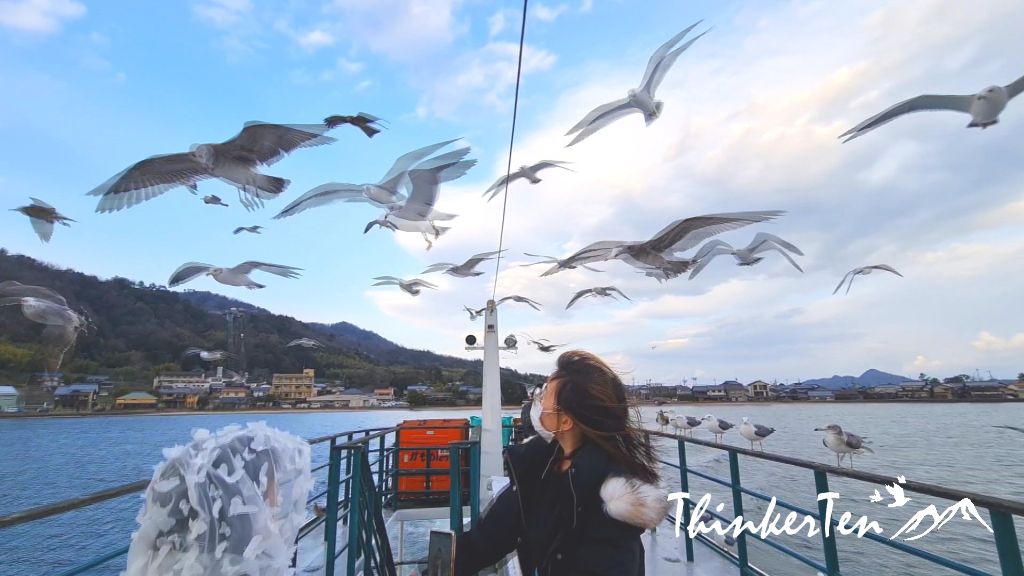
At the mountaintop, I noticed many people looking at the scenery upside down through their legs. From the upside-down position, the bridge appears to be a dragon flying into heaven. Viewing it this way is said to bring the visitor luck. Seeing people looking at the world upside down through their legs is really amusing.

Chion-ji Temple
Nearby there is Chion-ji Temple, temple houses one of Japan’s “Three Important Statues of Monju Bosatsu”, the Buddhist god of wisdom and intellect. As such, students and other visitors come to the temple to pray for both wisdom and academic and personal success. They purchase special fortunes (omikuji) shaped like folding fans, which many people leave hanging from pine trees all around the temple grounds.
Other important structures around the temple are a large entrance gate and a two-story tahoto style pagoda, which was built in the 1500s and is the oldest structure on the temple grounds. Chionji is also the site of the tomb of Izumi Shikibu, a famous female poet from the Heian Period (710-1185).

Where to stay? Resorpia Kumihama Resort
Resorpia Kumihama Resort is located at Kumihama Bay and we will be staying one night. It took about an hour to arrive from Amanohashidate.

We tried to arrive before sunset, else it is too dark to look for our hotel. Luckily we reached the hotel slightly before sunset. The sunset is around 5 pm during the winter time. The resort is located at the top of a hill and offers a great view of Kumihama bay. The hotel has in house restaurant but it was fully booked due to the year-end bōnenkai party. 忘年会 literally “forget the year gathering” is a Japanese drinking party that takes place at the end of the year and is generally held among groups of co-workers or friends.

Since the in-house restaurant is fully booked, the front desk recommends us the nearby Italian restaurant. It took about 15 mins drive to the restaurant. We ordered some pizza, pasta and Omurice. The portion was big and the taste is average.



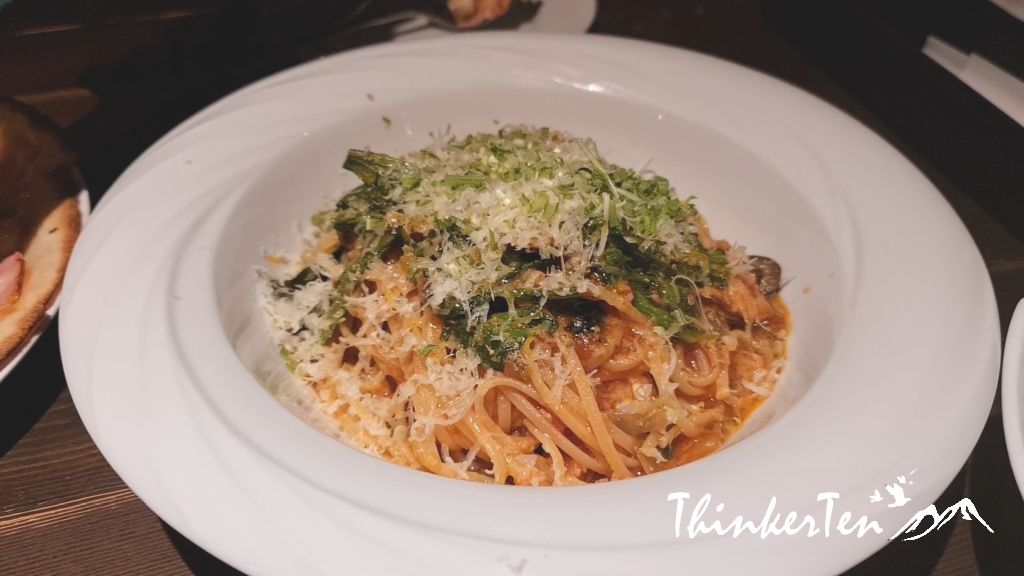
Glad there are in-house onsen hot bath facilities where guests can choose their yukata at the lobby. I love Japanese hot baths where you can soak your body in the hot water and relax for about 10-15 mins, that way you will feel and have a good night’s sleep.


You’re not allowed to wear any clothing in an onsen—no swimwear, underwear, or towels should touch the water; just your clean, naked body. Clean your body before you soak yourself in the hot water.
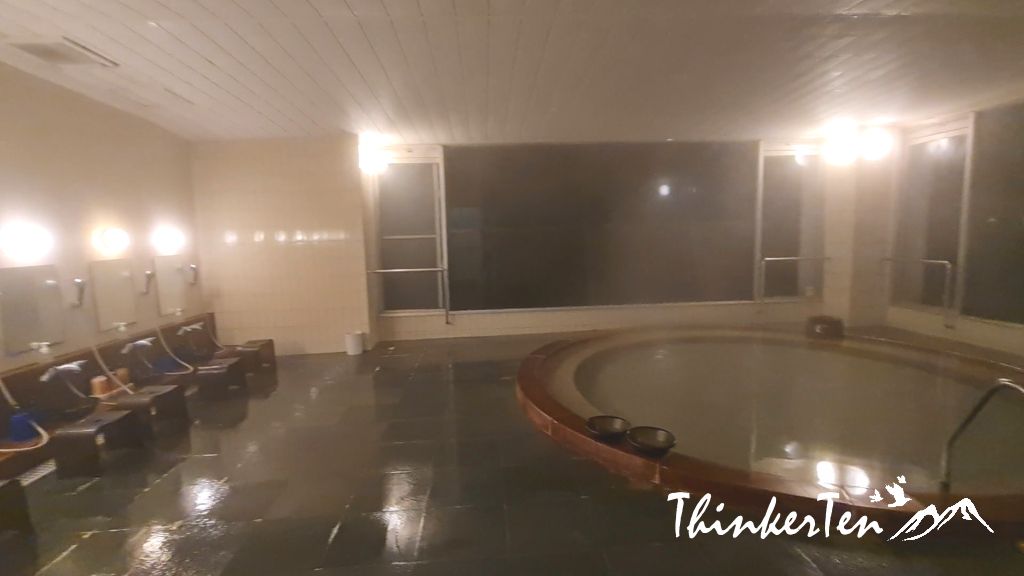
We have 2 beds and a tatami area in our room, so if you have more than 2 pax you can set up the futon bed in the tatami area.

Breakfast was included the next morning with the Japanese-style breakfast set, which include steamed rice, miso soup, fish, Japanese pickles, mentaiko, yogurt, and juice.

The hotel has an outdoor swimming pool but it was winter so there isn’t anyone swimming.

Tottori City – Day 9
The next morning, we headed to Tottori city after we had our breakfast in our hotel. Tottori is a prefecture located in the western part of Honshu island. It is bordering the Sea of Japan to the north and the Chugoku/Central Mountains to the south. It is the least populous prefecture in Japan, with a population of around 550,000 people. So this is really the countryside that we are about to explore.

On the way to Tottori, we stopped by a souvenir area that sells Matsuba crab. Matsuba crab is typically found in the Sea of Japan, including along the coast of Tottori prefecture, where it is one of the region’s most famous and sought-after specialties. The crab is harvested from November to March when it is at its most delicious and plump.
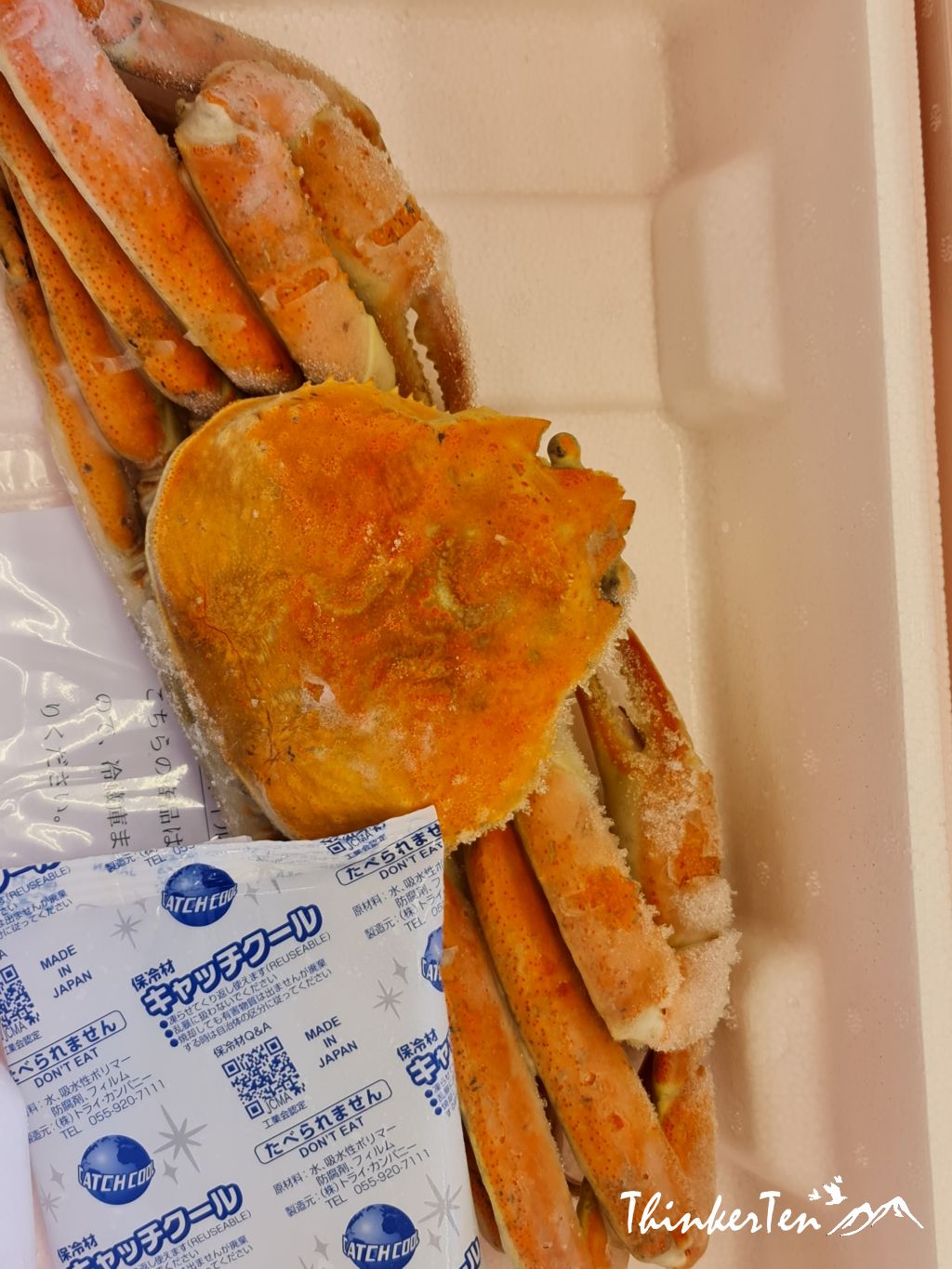
The souvenir store has a huge matsuba crab at the top of the roof which is very attractive from afar. We went in to get some crab cookies to take home.
Within the Tottori prefecture itself, there are several notable mountains and hiking trails. The Chugoku Mountains run through Tottori and the surrounding prefectures, and they are part of the larger Japanese Alps mountain range. We saw layers of mountains along our way to Tottori city and most mountain tops are white due to snow which creates stunning landscapes of snow-capped mountains.
Tottori is home to a number of natural and cultural attractions. One of its most famous landmarks is the Tottori Sand Dunes, the dunes are made up of over 30 square kilometers of sand that have been shaped over thousands of years by the wind and waves. It looks like a mini desert.
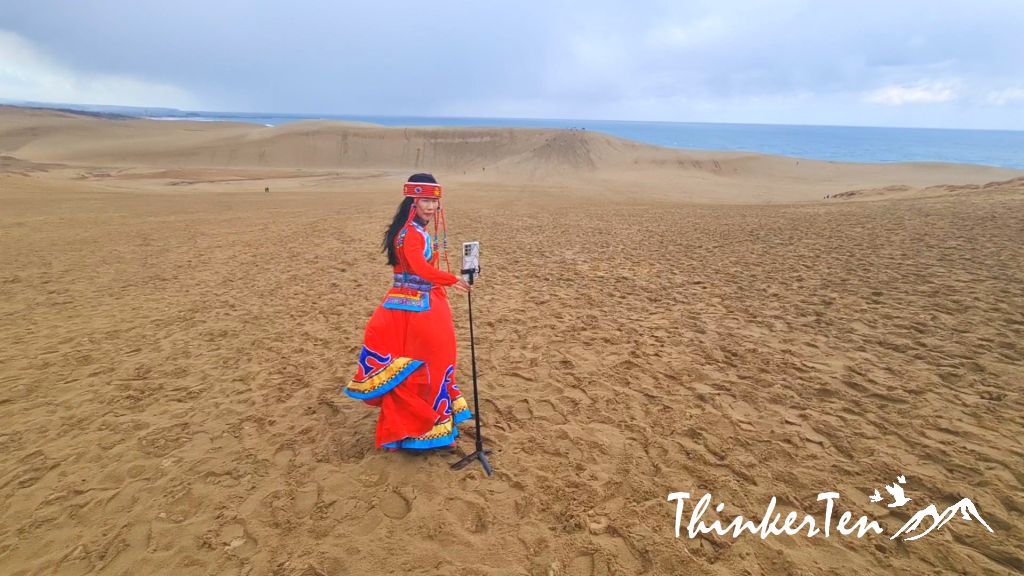
It was drizzling in the morning when we arrived so went for our early lunch before exploring the sand dune. There is a huge parking area in front of the sand dunes where souvenir stores and restaurants are located. We had some Japanese lunch set while waiting for the rain to stop.
There are a number of activities including sandboarding, camel rides, and horseback riding. Due to the rain, we aren’t really able to do much but just explore with walking. Walking in the desert here reminds me of my trip to the Gobi Desert and Egypt trip.
Due to the poor weather and strong wind, it really takes a lot of effort to climb up the top.
After some struggle, we managed to make it to the top and it’s totally impressive, praise the power of nature. We finally saw how beautiful it is the coastal line of the Japan Sea.
Difference between the sand in the Gobi Desert vs the Tottori Desert
It is easier to walk on the Tottori sand dunes here as compared to the Gobi Desert. The main differences between Gobi Desert sand and Tottori sand are their composition, grain size, and environmental conditions. The sand in the Gobi Desert is very loose and dry due to the arid and windy climate. This type of sand is known as “dry sand,” which does not have enough moisture to stick together and form a solid surface. But over here in Tottori sand dunes, the sand is so much moist hence making it a lot easier to walk.
Tottori hosts several festivals throughout the year, including the Tottori Sand Dunes Festival in May. Nearby there is Tottori Sand Dune Museum if you wanted to find out about the formation of this unique landscape.
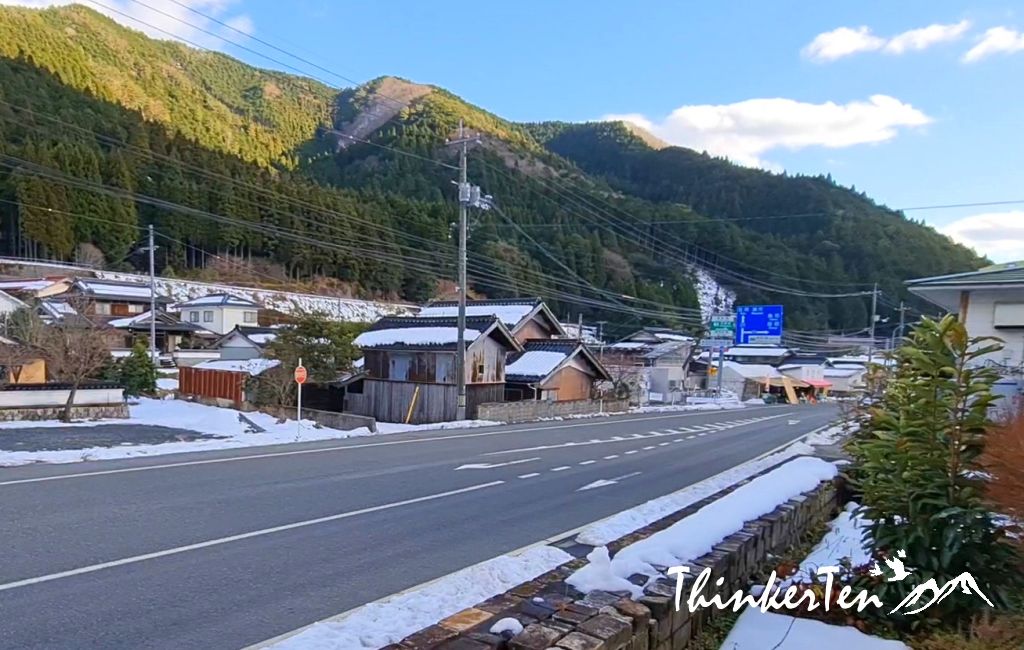
On the way to Himeji
On the way to Himeji, we stopped by a small town for a toilet break. Since it is not a paid highway or they called it expressway, the rest area looks different from the usual rest area that we visited in the expressway. The highway we used to go to Himeji is a national highway and the national highway is not charged and has no toll booth. The rest stop is right outside the highway next to a small town. We used the toilet facilities and check out the fresh supermarket and souvenir store. The town has lots of snow, not sure why. Maybe it is surrounded by mountains.

Where to stay? Hotel Monterey Himeji
We reached Himeji before sunset, our hotel is Hotel Monterey Himeji. The hotel is situated near Himeji Castle.
The hotel features a classic European-style design with elegant furnishings and decor, creating a luxurious and comfortable atmosphere. There are 225 guest rooms, each equipped with modern amenities such as air conditioning, flat-screen TV, free Wi-Fi, and a minibar.

Hotel Monterey Himeji has several on-site dining options, including a French restaurant, Japanese restaurant, and cafe. Other facilities at the hotel include a fitness center, spa, and banquet rooms for meetings and events.
We choose to dine outside near the hotel, there are a lot of options to choose from. We stroll around and found a Japanese Chuka Restaurant. It is a Japanese style of Chinese dish.


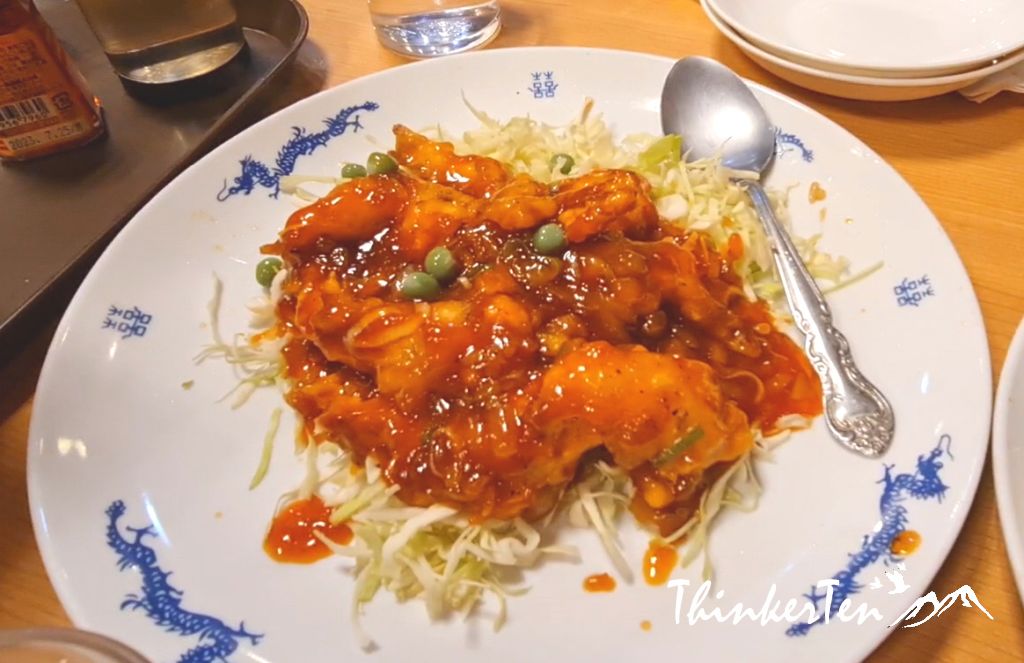


Some popular dishes that we ordered are gyoza dumplings, ebi chili, pepper with pork, mapo tofu and shoju.

Hotel Monterey Himeji offers a breakfast buffet for guests. The breakfast buffet features a variety of Japanese and Western-style dishes, including eggs, bacon, sausage, pastries, bread, yogurt, fruit, and more.
There are also several traditional Japanese breakfast items available, such as miso soup, grilled fish, and rice. What I love about this buffet is they offer some popular Himeji specialty. Overall, this is one of the best buffet ranges we had tasted so far. We really appreciated and enjoyed the variety and quality of the food here.

Himeji Castle – Day 9
This is the second time we visited Himeji Castle. The castle is also known as the White Heron Castle due to its elegant, white appearance. It is also a UNESCO World Heritage Site. I personally found this my favorite castle. It is impressive, elegant, and unique, especially the six-story wooden structure. The open field is great for photo opportunities. You can choose to enter the castle and there are also many gardens surrounding the castle along with a zoo and theme park. You can spend half to a whole day here.

Kobe Nunobiki Ropeway
To go up Mount Rokko in Kobe and visit the famous Herb Garden, we need to go up by cable car. The garden features over 75,000 plants from around the world, including herbs, flowers, and trees.

The highlight of the ride lies in the observation deck located just beside the top station, which offers spectacular views of Kobe.


Where to stay? Star Gate Hotel Kansai Airport
Since we are departing tomorrow morning, we choose to stay near the Kansai Airport. Star gate is a great hotel should one needs to overnight before or after a flight, it only takes 10 min to arrive to the airport.

Nearby there are Rinku Premium Outlets and malls to shop around. It is within walking distance. We had our dinner nearby at one of the malls.

Star gate hotel breakfast is located on the 54 floor, the buffet range is not that fantastic but the view is amazing. You got to see the beautiful skyline of the city.
Please fill in your petrol before returning
There are several petrol stations which operate 24 hours around the airport. Please remember to fill up the petrol before returning your car rental. Please remember to collect your change at the change machine which is situated next to the petrol pump machine.


Kansai Airport
We reached Kansai airport at around 8 am, return the car, calculate the ETC charges with the rental car counters and check-in the airport on time.

Final thoughts:
Glad that we have a rental car we are able to explore the countryside which is outside of Osaka and Kyoto area such as Amanohashidate and Tottori. Driving in the Japanese countryside is a unique and enjoyable experience, as it allows travelers to explore some of the country’s most beautiful and remote areas. However, there are a few things to keep in mind when driving in Japan. The roads in Japan can be narrow, winding, and sometimes difficult to navigate, particularly in rural areas. But a lot of the time, we are using the expressway and national highway so we are still quite alright. The rest area on Japanese highways offers drivers a chance to take a break and check out the local specialties, which is something we always look forward to.
Countryside hotels usually offer public onsen baths which is another bonus point and rooms are more spacious and you don’t even know that you are in Japan. Most importantly it is a lot cheaper compared to the city area such as Tokyo or Osaka.

